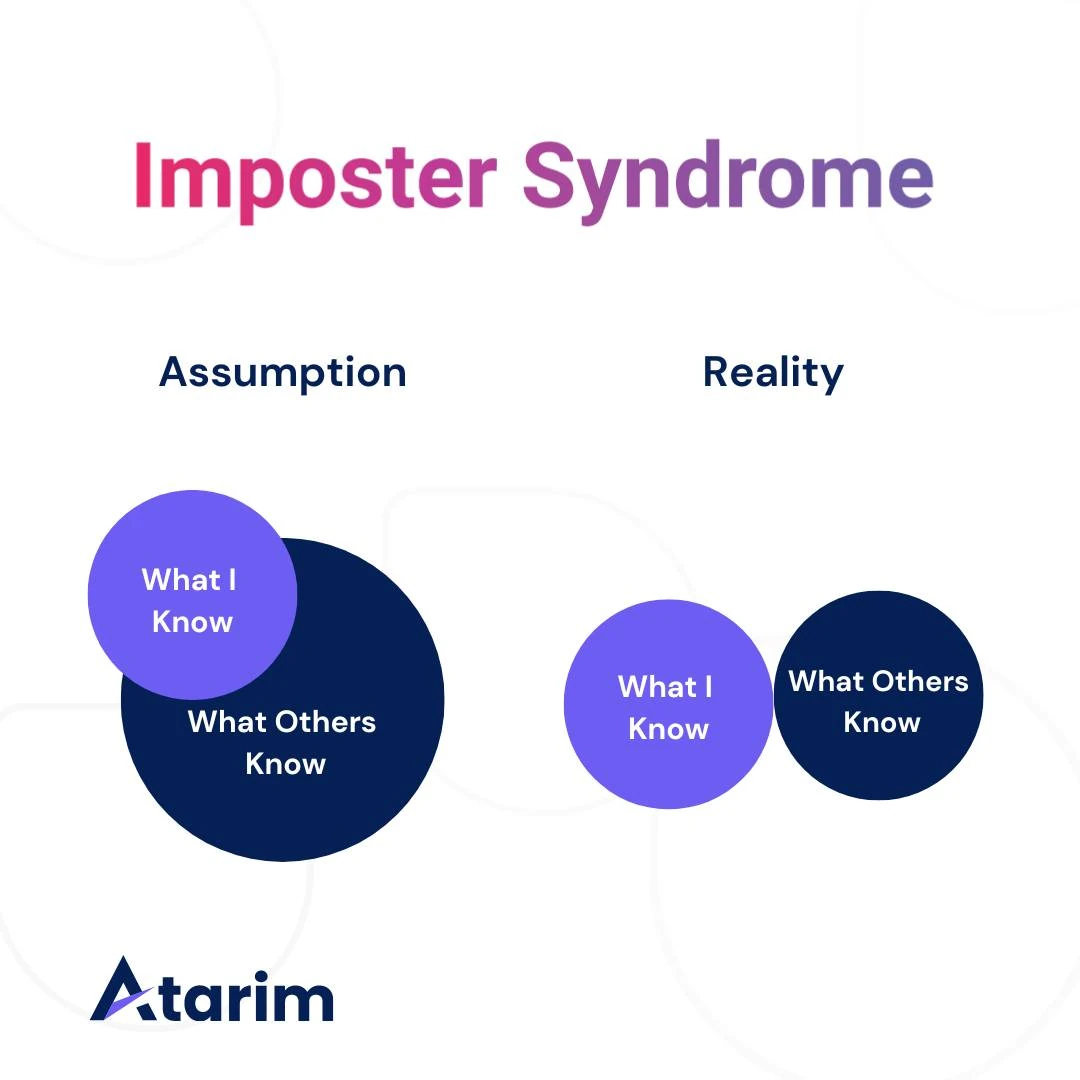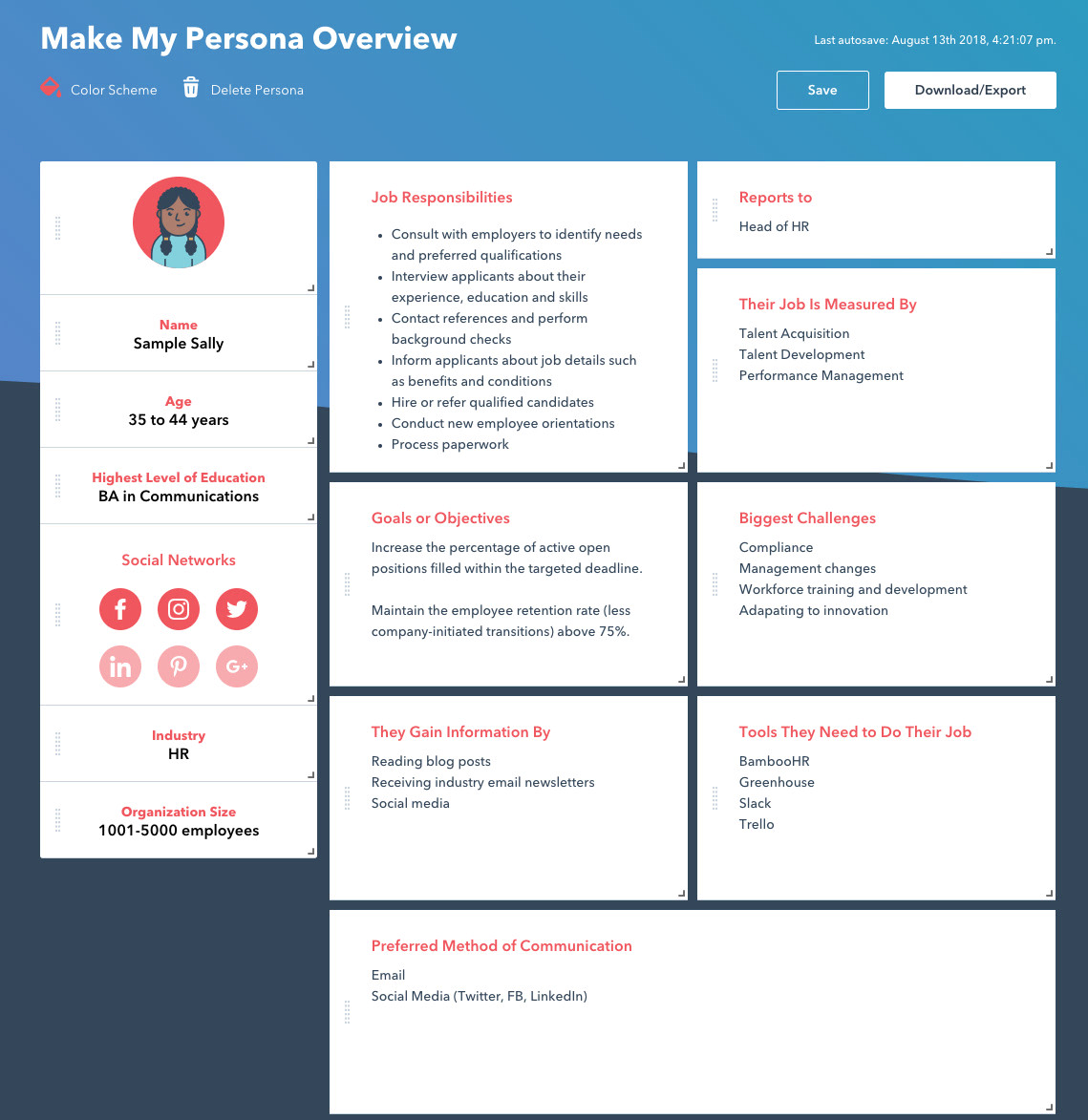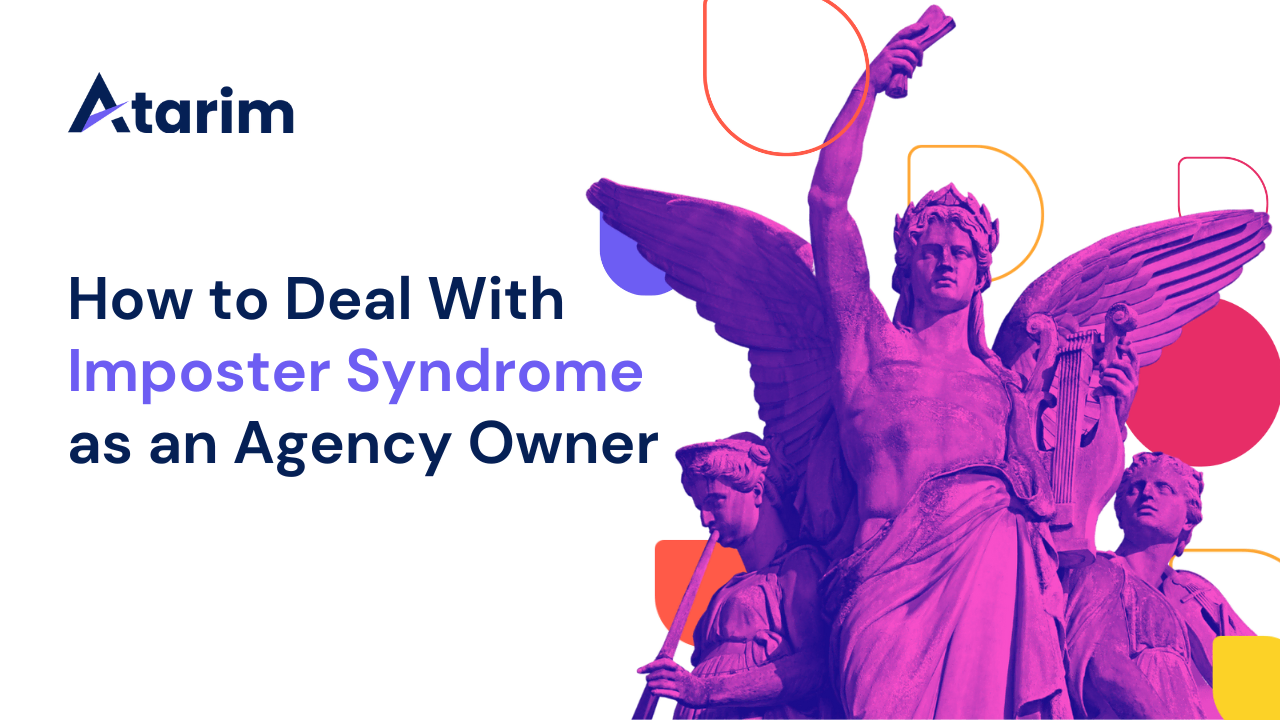Imposter syndrome can make you feel like a fraud.
You’ll experience feelings of self-doubt, fear, and anxiety – constantly worrying about being exposed. If you’ve ever experienced any of these symptoms, you’re not alone…
In fact, 65% of professionals today suffer from imposter syndrome.
Unfortunately, most agency owners will never resolve imposter syndrome, and as a result, their agency suffers. In this post, you’ll discover how to eliminate the imposter syndrome for you and your agency, so you can feel positive about making positive change!

What Is Imposter Syndrome?
Imposter syndrome is a condition in which you feel anxious, and doubt your skills and accomplishments – while having a constant fear of being exposed as a fraud.
It can be broken down into these five basic types:

Source: Asana
Understanding Imposter Syndrome
Even though imposter syndrome is not a diagnosable mental illness, it can still weigh heavily on a person’s mental health.
Here are three factors that may contribute to experiencing imposter syndrome.
#1 – Personality
Some personality types are more linked to internalizing feelings of pressure, doubt, and failure. Imposter syndrome traits are commonly seen in the Turbulent personality type.

Of course, impostor syndrome can plague any personality type.
However, people who rely on the Turbulent strategies of constant improvement and social engagement are much more likely to experience imposter syndrome.
#2 – Social Pressures
This can especially occur when you’re part of a social circle or group where approval or worth seems to be explicitly connected to achievement.

Source: MBAROIN
For instance, last quarter, you might have been invited to a monthly executive dinner after surpassing a sales record, and being the hero of the sales team.
But this quarter, your numbers are down, and your invitation is nowhere to be found.
#3 – Sense of Belonging
Part of imposter syndrome is the fear of being found out and cast out.
Any circumstance that makes a person feel different or excluded from a group may carry that persistent sense of not belonging – long after the circumstance is resolved.

Source: Frontiers
How Do You Know Whether You Struggle with Imposter Syndrome?
You might be wondering whether you’re struggling with imposter syndrome, or it’s just increased self-doubt.
Let’s clear that up.
Here are the three most common characteristics of imposter syndrome.
#1 – Self-Doubt
If you constantly doubt yourself, and experience a lack of self-worth, it may result in feelings of anxiety regarding your ability to succeed.
Success is viewed as an unattainable and risky goal – something that simply can’t be achieved.
#2 – Sabotaging Self-Success
Imposter syndrome may lead to psyching yourself out.
You’ll start telling yourself that your work will be sloppy and insufficient, which may cause you to put in less effort, attention, and persistence.
#3 – Setting Unrealistic Expectations
You might feel the sensation that your best isn’t enough.
This often leads to setting unrealistic expectations for yourself – to accommodate for feeling inadequate when accomplishing what are actually realistic, timely, and challenging goals.
How to Beat Imposter Syndrome As an Agency: A Step-By-Step Process
In this section, you’ll discover how to beat imposter syndrome as an agency. By doing this, you’ll no longer have to ask yourself what makes your agency unique.
Instead, you and your team will feel confident, purposeful, and ready to win.
#1 – Define Your Customer Avatar
It’s critical to know precisely who you are serving. You must make your target persona as vivid as possible – and include every possible detail you can.
After doing this, you’ll end up with your ideal customer profile, which can look like below.

Source: HubSpot
There are a lot of FREE tools such as Make My Persona that can help you do that.
Doing this might not seem important; however, having a clear picture of your ideal customer will give you confidence and a sense of purpose for your agency, so you and your team will no longer struggle with who you serve, and whether you’re a fraud.
#2 – Break Down The Customer’s Key Problems
You must explore the problems and pain points experienced by your ideal customer, so that you can communicate with them based on their challenge, and how the solutions you offer can help directly. This will allow your team to see the exact problems you can solve for your customers.
(Which will eliminate the feelings of being a fraud.)
You can easily find the challenges of your customer by:
- Interviewing your existing customers
- Conducting market research
- Creating feedback forms
#3 – Match Your Customers to Your Strengths
If you can define your strengths and marry them to the problems of your customers, you’ll become the customer’s first choice. Moreover, you won’t be playing on your weaknesses – increasing the risk of failure and feeling inadequate.
To figure out your strengths, you should ask yourself these questions:
- What do you absolutely love to do?
- What are you amazing at?
- What makes you unique?
You can also take the initiative and ask each of your team members about their strengths and weaknesses. That way, you can ensure your whole team plays on its strengths.
(And by doing this there is a much reduced chance of experiencing imposter syndrome.)
#4 – Build Your Platform
A big part of imposter syndrome is the sense of not belonging – or feeling left out.
Building your platform is all about knowing where to show up to meet your target customers and how to get their attention.
If you followed the steps above, you should know precisely:
- Who your target audience is
- What they are struggling with
- How you can help them with your solution
This ensures you can meet your customers confidently, and provide them with a message that will resonate with them.
5 Tips to Overcome Imposter Syndrome
You may have found the purpose of your agency – so your organization no longer feels like a fraud. But what about you – and each individual on your team?
In this section, we’ll share our 5 tips to help you and your team overcome imposter syndrome.
#1 – Shift Your Mindset
If you’re feeling like an imposter, you’re likely in a situation outside your comfort zone.
You can either look at this situation with fear and worry – or take the opposite approach and look at it as an opportunity to grow – which we recommend!

Source: Alter Ledger
You might be growing your agency at a rapid pace, expanding your team, or trying a new way of running your company.
Either way, you’re taking a risk that might lead you to betterment, and that’s a win!
Once you start viewing imposter syndrome as a sign of progress, the self-doubts start turning into affirmations. The next time you feel like you’re not qualified to take on a new opportunity, just remind yourself that you’re pushing your limits and moving towards succeeding as an agency owner.
#2 – Learn From Your Team Members
Sharing your feelings with co-workers and partners can be difficult.
In fact, a huge 94% of those who have suffered from imposter syndrome haven’t discussed their feelings at work.

Source: InnovateMR
However, your team members might be exactly the support you need to get through imposter syndrome. Your colleagues might have experienced the same problems you’re facing, and can give you advice on how to overcome them.
#3 – Focus on the Facts
Addressing your feelings is important; however, sometimes, you just have to look at the facts and ignore feelings of doubt and fear. This is because imposter syndrome can make you feel like you’re not good at your job.
However, the reality and facts say otherwise…
If you can look at facts such as your achievements, and finished projects, you can get a better sense of reality, and feel better about yourself.
#4 – Find Resources to Grow
Imposter Syndrome doesn’t always have to be a bad thing.
Instead, if you can look at it from a growth mindset perspective, you can see it as an opportunity to fill in the gaps in your knowledge.
Hone in on the aspects you think could be improved, and make a plan to work on them.
#5 – Fake It Until You Make It
This concept can help you tremendously in overcoming imposter syndrome since it can change the way you view yourself (and who you are) as a person.
In essence, you start to act as if you were the person you want to become, which includes:
- Dressing that way
- Talking that way
- Working that way
…and everything else.
As you begin to do this regularly, you’ll naturally start to become the person you’re wanting to be – and overcome imposter syndrome as you do.
It may seem counterintuitive – faking your way through imposter syndrome! But it does actually work. You may have come across the concept of ‘daily affirmations’, and there is actually a lot of evidence to back this approach up. Your brain is eminently programmable, and learns through habits. Fake it regularly enough, and one day you’ll realize you don’t have to fake any more, because that really is who you are now.
Unless you aspire to be a penguin. No daily affirmation or faking it will result in that. Sorry.
Conclusion
Good, clear communication, and clearly defined roles are both essential for eliminating the self doubt that can come from imposter syndrome.
And that’s exactly where Atarim can help.
Atarim cuts any doubt about what is required by completely transforming the way team members communicate about projects and tasks both with their clients, and within teams.
This is through Atarim’s unique visual collaboration approach, eliminating guesswork, and making sure everyone is 100% clear on exactly what needs to be done, where, and by whom.
And with Atarim making it easier than ever to assign specific tasks to individual team members, along with priority ratings and timers/deadlines, everyone knows exactly what they’re doing, what their role is, and how their contribution fits into the whole project.
If you want to eliminate guesswork, poor communication, and vague role responsibilities, try Atarim for free today.
- Integrated into the leading visual collaboration platform trusted by 13,000+ agencies (web dev, design, and beyond) worldwide.
- Supporting project delivery for 1,200,000+ of their clients and stakeholders.
- Deliver projects in weeks instead of months.

